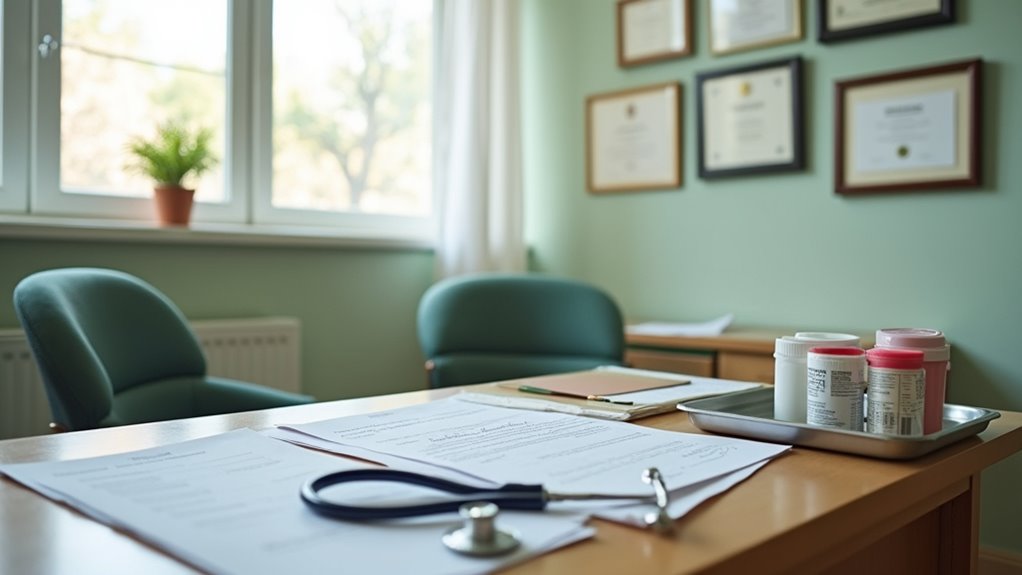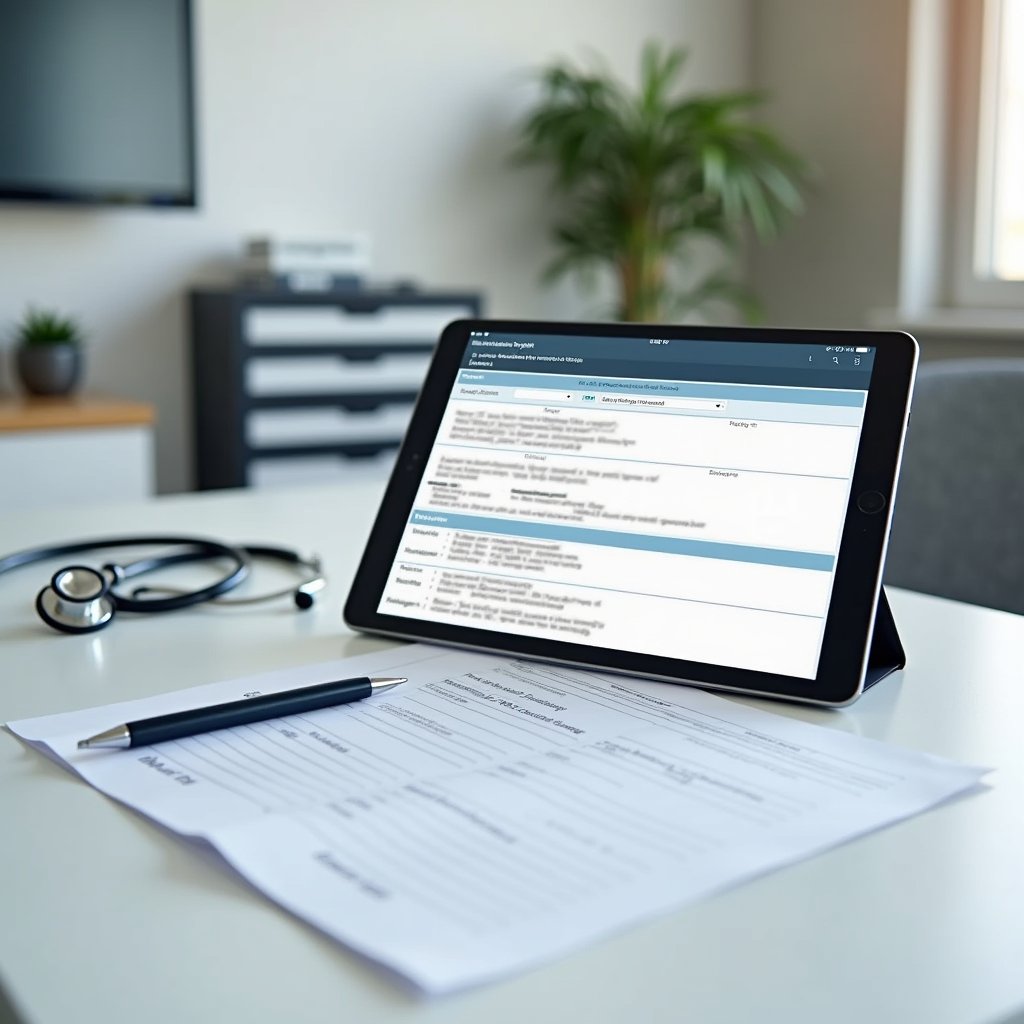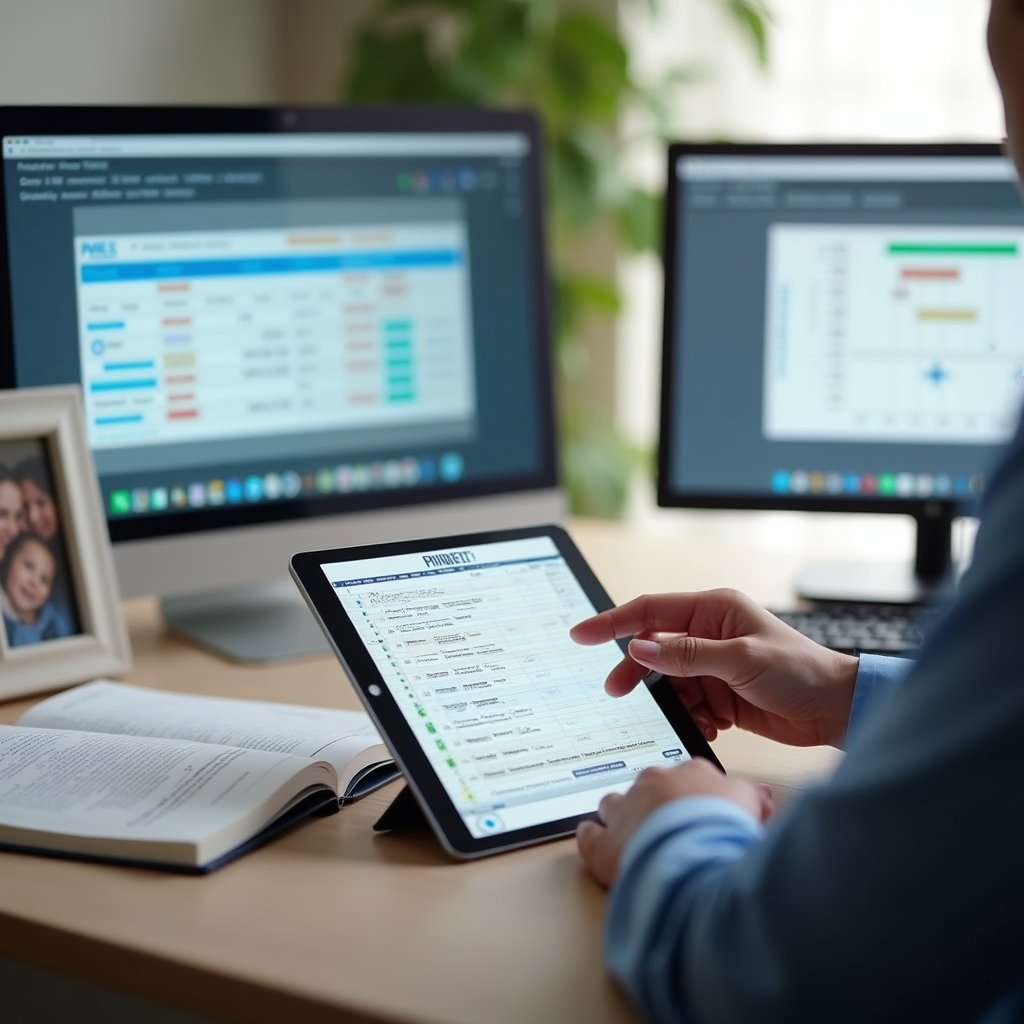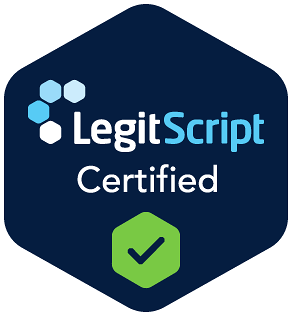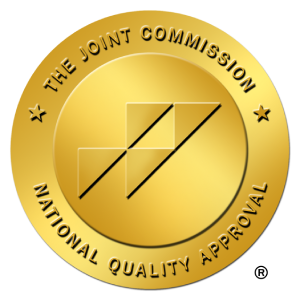Overcoming porn addiction requires targeted strategies: identify your personal triggers, build a supportive accountability network, implement digital boundaries with content filters, practice mindfulness techniques like urge surfing, address underlying emotional needs, replace porn with healthy dopamine sources (exercise, creativity, connection), and establish a structured recovery plan with clear milestones. Recovery isn’t linear, but combining these evidence-based approaches greatly improves your chances of breaking free from unwanted patterns and developing healthier coping mechanisms.
Recognize Triggers and Develop a Personalized Prevention Plan

Recognizing your personal triggers constitutes the essential initial step in overcoming pornography addiction. These triggers whether emotional (stress, loneliness, boredom), environmental (specific locations or times of day), or physiological (fatigue, substance use) often initiate the compulsive cycle. Through trigger journaling, you’ll identify patterns that precede urges, allowing you to develop targeted prevention strategies.
Your personalized prevention plan should address your unique vulnerability factors. This might include installing blocking software, establishing accountability relationships, or creating environmental modifications that reduce exposure opportunities. Research indicates that successful recovery hinges on proactive rather than reactive approaches. When you anticipate triggers and prepare specific countermeasures, you’re considerably more likely to interrupt the addictive pathway before cravings intensify. Keep in mind that effective prevention strategies evolve as you gain insight through continued self-observation and recovery work.
Build a Support Network of Accountability Partners
Isolation typically reinforces addictive behaviors, which is why building a strong support network represents a crucial element in sustainable recovery from pornography addiction. Seek out trusted friends, family members, or mentors who understand your struggle and will check in regularly without judgment.
Consider joining a support group specifically focused on sexual addiction recovery, where you’ll connect with others facing similar challenges. These communities provide validation, perspective, and practical strategies from those who’ve experienced success in their recovery process.
Schedule regular accountability meetings, whether in-person or virtual, to maintain momentum. Effective accountability partners will ask direct questions about your triggers, screen time, and coping mechanisms. They’ll also celebrate your progress while helping you navigate setbacks with compassion rather than shame. This structured accountability dramatically increases your chances of long-term success.
Implement Digital Boundaries and Content Filtering Tools

Because your digital environment substantially influences recovery success, implementing technological boundaries represents a vital step in overcoming pornography addiction. Install reputable content blockers on all your devices, configuring them to filter explicit material while allowing healthy internet use. Consider accountability software that reports your browsing history to trusted partners.
Establish regular digital detox periods specific hours or days when you disconnect completely from screens. Research shows these breaks reduce compulsive behaviors while restoring dopamine sensitivity. Create physical boundaries too: keep devices out of your bedroom and use computers only in public home spaces.
Remember that filters aren’t foolproof. Their primary value lies in creating a moment of pause between urge and action, giving you essential seconds to engage your recovery strategies.
Practice Mindfulness and Urge Surfing Techniques
Mindfulness practices can help you recognize your triggers with heightened awareness, acknowledging urges without judgment when they arise. When cravings intensify, urge surfing techniques allow you to observe these sensations as temporary waves that will eventually subside rather than acting on them impulsively. Establishing a daily meditation routine, even for just 5-10 minutes, strengthens your ability to remain present and cultivate the mental space needed between stimulus and response.
Recognize Triggers Mindfully
How often do you find yourself automatically reaching for pornography without even realizing what prompted the behavior? This unconscious pattern makes recovery difficult, which is why trigger awareness is essential for lasting change.
Start by documenting when urges arise. Notice the specific situations, emotions, times of day, or thoughts that precede the desire to view pornography. Through mindful observation, you’ll identify patterns perhaps boredom, stress, loneliness, or even certain locations trigger your urges.
The key isn’t to judge these triggers but to observe them objectively. When you recognize “I’m reaching for porn because I feel rejected after that phone call” rather than acting automatically, you create space between stimulus and response. This awareness interrupts the automatic cycle and gives you the power to choose a healthier alternative.
Ride Urges Without Acting
When urges to view pornography arise, they often feel overwhelming, as if they’ll never subside without being satisfied. In reality, urges are temporary psychological states that peak and naturally diminish whether you act on them or not.
“Urge surfing” is an evidence-based coping strategy where you mentally observe your cravings like waves that rise, crest, and eventually break. When triggered, pause and notice physical sensations racing heart, tension, or restlessness without judgment. Take slow, deep breaths while acknowledging these feelings will pass.
Effective urge management involves redirecting your attention rather than suppressing thoughts. Try the 5-minute rule: commit to waiting just five minutes before deciding whether to act. This delay creates space between impulse and behavior, allowing the urge’s intensity to naturally subside.
Daily Meditation Practice
Establishing a consistent meditation practice creates a foundation for both urge management and broader addiction recovery. Begin with just 5-10 minutes daily, gradually increasing to 20 minutes as your comfort grows. Focus on mindful breathing techniques observing inhalations and exhalations without judgment which strengthens your ability to notice urges without automatically responding to them.
Incorporate daily affirmations that reinforce your recovery goals and personal worth beyond addiction. Research shows meditation reduces stress hormones that often trigger relapse while increasing gray matter in brain regions associated with self-control. When urges arise, you’ll find yourself better equipped to observe them objectively rather than being overwhelmed. This mindfulness skill transfers to daily life, helping you recognize triggers earlier and respond with greater awareness instead of compulsive behavior.
Address Underlying Emotional Needs and Root Causes
Examining the emotional triggers behind your porn use can reveal unmet needs that you’re trying to fulfill through this behavior. Childhood experiences often shape your relationship with intimacy, setting patterns that manifest in addictive behaviors when you’re stressed or lonely. By challenging core beliefs about yourself and relationships that fuel your addiction, you’ll develop healthier coping mechanisms and address the root causes rather than just the symptoms.
Identify Emotional Triggers
Behind almost every addiction lies a complex web of emotional triggers that fuel compulsive behavior. Recognizing these triggers is a vital step in the direction of recovery from porn addiction. When you understand what emotions prompt you to seek escape through pornography, you gain power over these unconscious patterns.
Self-reflection exercises help identify specific emotional states like boredom, stress, loneliness, or anxiety that precede urges. Try emotional journaling after cravings occur, noting what you felt immediately before the urge arose. Look for patterns: Are you more vulnerable after conflict? When feeling inadequate? During periods of exhaustion?
Research shows that accurately identifying triggers increases recovery success rates by allowing you to develop targeted coping strategies for each emotional state, rather than fighting a generalized addiction without understanding its foundations.
Heal Childhood Wounds
Many porn addiction patterns can be traced back to unresolved childhood experiences that continue to exert influence on adult behavior. Childhood trauma often creates emotional voids that pornography temporarily fills. To heal these wounds, you’ll need to develop self-awareness around your family dynamics and how they shaped your relationship patterns.
Therapeutic techniques like inner child work can help you process past experiences in a safe environment. Consider journaling about early memories, identifying where your needs went unmet. Self-compassion practices are essential during this process approach your pain with the same kindness you’d offer someone else.
As you address these underlying emotional needs, you’ll develop healthier coping mechanisms. This healing process requires patience, but identifying and processing childhood wounds considerably reduces compulsive pornography use.
Unpack Core Beliefs
Core beliefs about yourself and sexuality often operate beneath conscious awareness while fueling addictive patterns. These deeply held convictions formed early in life create cognitive distortions that maintain compulsive behaviors despite negative consequences.
| Unhealthy Core Belief | Cognitive Distortion | Healthier Alternative |
|---|---|---|
| “I’m unlovable without sex” | All-or-nothing thinking | “I’m worthy of love regardless of sexuality” |
| “I can’t control my urges” | Catastrophizing | “I can develop skills to manage urges” |
| “Porn is my only escape” | Mental filtering | “I have multiple healthy coping strategies” |
Examining these beliefs requires courageous self-reflection. When you recognize a distorted thought pattern, challenge it with evidence from your life that contradicts it. This cognitive restructuring gradually weakens addiction’s psychological foundation and replaces shame-based thinking with self-compassion.
Replace Unwanted Behaviors With Healthy Dopamine Sources
Once you’ve identified your triggers and begun to establish new patterns, replacing unwanted behaviors with healthy dopamine sources becomes essential for recovery. Your brain craves stimulation, but you can redirect this need towards positive activities that provide sustainable satisfaction.
Physical exercise releases endorphins that improve mood and reduce cravings. Try incorporating daily nature walks or strength training into your routine. Creative outlets like art, music, or journaling techniques provide emotional expression while engaging your mind constructively.
Developing new skills offers achievement-based dopamine rewards that strengthen neural pathways supporting recovery. Consider volunteer opportunities that provide social engagement and purpose. Mindfulness practices help you experience natural pleasure without excessive stimulation.
Choose healthy hobbies that align with your interests they’re more sustainable when genuinely enjoyable rather than merely distracting.
Establish a Structured Recovery Timeline With Measurable Goals

Recovery from porn addiction requires a structured approach with clearly defined milestones to measure progress and maintain momentum. Begin by establishing both short-term goals (24 hours, 1 week, 1 month porn-free) and long-term objectives (90 days, 6 months, 1 year).
Track your progress daily using a journal, app, or calendar system that allows you to document urges, triggers, and successful resistance strategies. Each recovery milestone should include measurable indicators beyond just abstinence improvements in relationships, productivity, mental clarity, and decreased anxiety.
Remember that setbacks aren’t failures; they’re data points for refining your approach. Adjust your timeline as needed, but maintain consistent goal tracking. Consider working with a therapist to establish realistic benchmarks based on your specific circumstances and to celebrate meaningful progress along your recovery path.
Frequently Asked Questions
How Does Pornography Addiction Physically Affect the Brain?
Pornography addiction physically rewires your brain through neuroplasticity, creating pathways that strengthen with repeated use. You’ll experience neurotransmitter imbalances as your brain releases excessive dopamine during viewing, eventually requiring more extreme content to achieve the same effect. This alters your reward circuitry, potentially leading to decreased gray matter in decision-making regions. Your prefrontal cortex function may diminish, affecting impulse control and making it harder to regulate behavior around sexual stimuli.
What Role Does Medication Play in Treating Porn Addiction?
Medication options for treating porn addiction play a supporting role rather than being primary treatments. You won’t find FDA-approved medications specifically for porn addiction, but certain prescriptions may help manage underlying conditions like depression or anxiety that fuel compulsive behaviors. These medications work best when combined with therapy evidence shows therapy effectiveness increases when addressing both neurochemical imbalances and behavioral patterns simultaneously. Your healthcare provider can determine if medication might complement your recovery path alongside cognitive-behavioral approaches.
How Can I Disclose My Addiction to a Romantic Partner?
Disclosing your addiction requires open communication and honesty. Choose a private, distraction-free moment and explain your struggle clearly without overwhelming details. Emphasize your commitment to recovery and acknowledge how it might affect your relationship. Your partner’s emotional support can be essential to healing, but prepare for different reactions. Consider practicing your disclosure with a therapist initially. Remember, vulnerability often strengthens relationships, though timing and delivery matter greatly.
Is Relapse Inevitable During the Recovery Process?
Relapse isn’t inevitable during recovery, though it’s common. You’ll face relapse triggers like stress, boredom, or emotional distress, but developing a strong recovery mindset can help you navigate these challenges. Research shows that learning from setbacks rather than viewing them as failures strengthens your recovery path. Remember, progress isn’t linear each attempt builds resilience and skills. With appropriate support and evidence-based techniques, you can achieve lasting change despite occasional setbacks.
Can Couples Therapy Help if Porn Has Damaged My Relationship?
Yes, couples therapy can greatly help repair relationships damaged by pornography issues. You’ll learn communication techniques that allow both partners to express feelings safely while developing understanding. Therapists provide structured environments to address hurt, establish boundaries, and implement trust rebuilding exercises. Evidence shows that professional guidance helps couples navigate complex emotions and develop healthier patterns together. Many relationships emerge stronger when both partners commit to the therapeutic process with patience and vulnerability.

